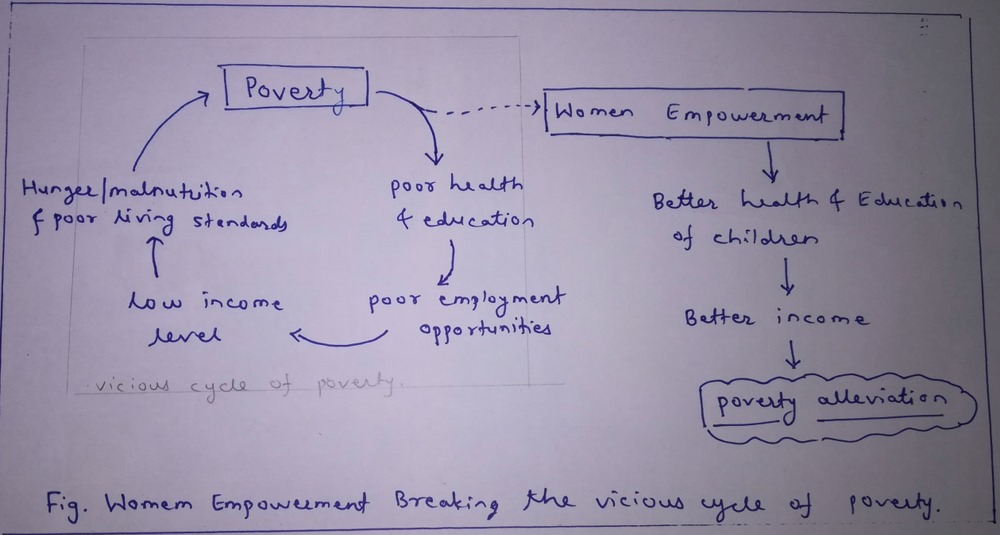Introduction:
As Swami Vivekananda wisely stated, “It is impossible to think about the welfare of the world unless the condition of women is improved. It is impossible for a bird to fly on only one wing.” This assertion underscores the vital connection between women’s empowerment and poverty alleviation.

Main Body:
Women Empowerment and Poverty Alleviation:
- Breaking the Vicious Cycle: Women’s empowerment can break the vicious cycle of poverty by addressing its root causes and effects.
- Significant Population Share: Women constitute nearly half of India’s population, making improvements in their status a significant contributor to poverty alleviation.
- Empowerment’s Ripple Effect: An empowered woman has the capacity to uplift two families: her family of orientation and her family of procreation.
- Leadership and Policy Influence: Empowered women play pivotal roles as leaders, influencing policies that favor social welfare and sustainable development.
- Catalyst for Transformation: Women’s empowerment acts as a catalyst for achieving transformative economic, political, and social changes essential for sustainable development.
Resource Allocation:
Studies indicate that women typically allocate their income to essential needs like food and healthcare for children, contributing significantly to poverty reduction. This contrasts with men, who often allocate a higher proportion of their income to personal needs.
Family Planning and Maternal Health:
Women’s empowerment leads to improved access to family planning and maternal health services, resulting in lower fertility rates and equitable resource distribution, ultimately aiding poverty alleviation.
How to Achieve Women Empowerment:
- Social: Developing Human Capital
- Health: Ensuring access to family planning and maternal health services, delaying childbirth, improving maternal and infant mortality rates, and ensuring nutritional security.
- Education: Education serves as a powerful tool for poverty eradication, as educated women tend to prioritize their children’s education and contribute more to their development.
- Economic Skill Development: Programs like the Barefoot College in Rajasthan focus on skill development for women.
- Financial Inclusion: Initiatives like the Pradhan Mantri Jan Dhan Yojana promote financial inclusion and literacy among women.
- SHGs and Microfinance: Leveraging the power of Self-Help Groups (SHGs) for microfinance, women’s entrepreneurship, and leadership development.
- Agriculture: Empowering women farmers through extension services, training, education, and land ownership rights.
- Equal Wage for Equal Work: Ensuring equal wages for equal work, as mandated by Article 39 of the Indian Constitution.
- Political
- Equal Representation: Advocating for equal representation of women at all levels of governance, from Panchayats to Parliament.
- Addressing Real-Time Issues: Tackling issues like the ‘sarpanch pati’ phenomenon where husbands wield power behind elected women leaders.
Conclusion:
Poverty and empowerment issues cannot be adequately addressed when only half of the population is positively and actively engaged. Therefore, actively engaging women as drivers of positive change and as a means to eliminate poverty in the country should be our primary focus. Swami Vivekananda’s wisdom reminds us that true progress can only be achieved when both wings of the bird are strong and empowered.
